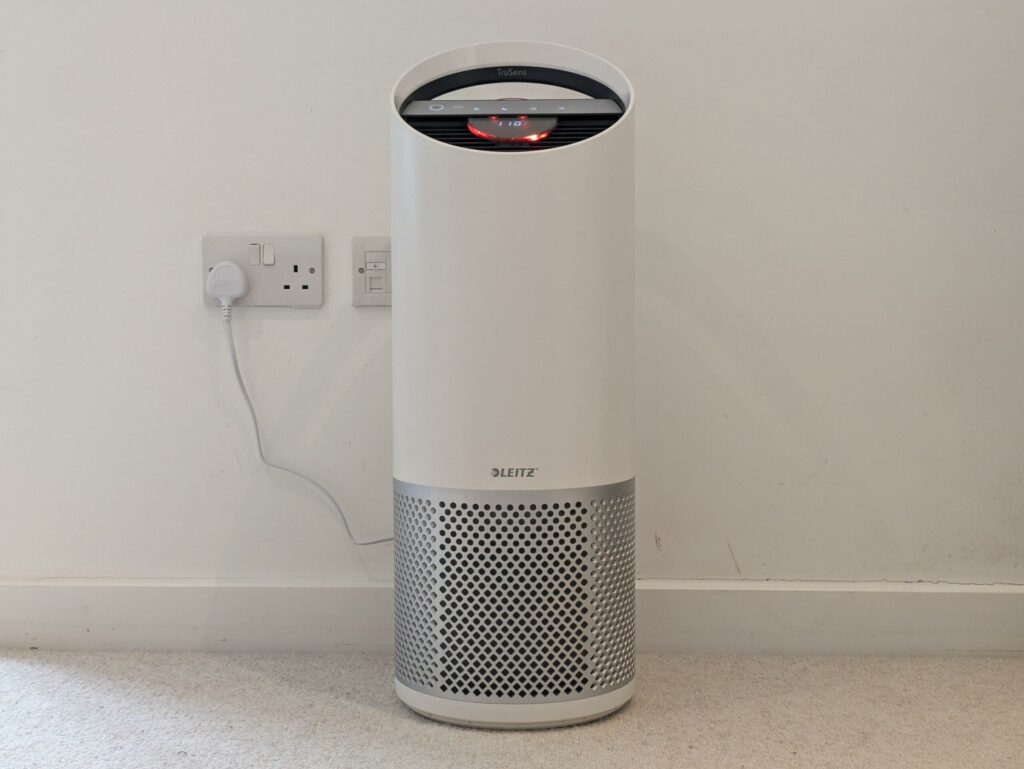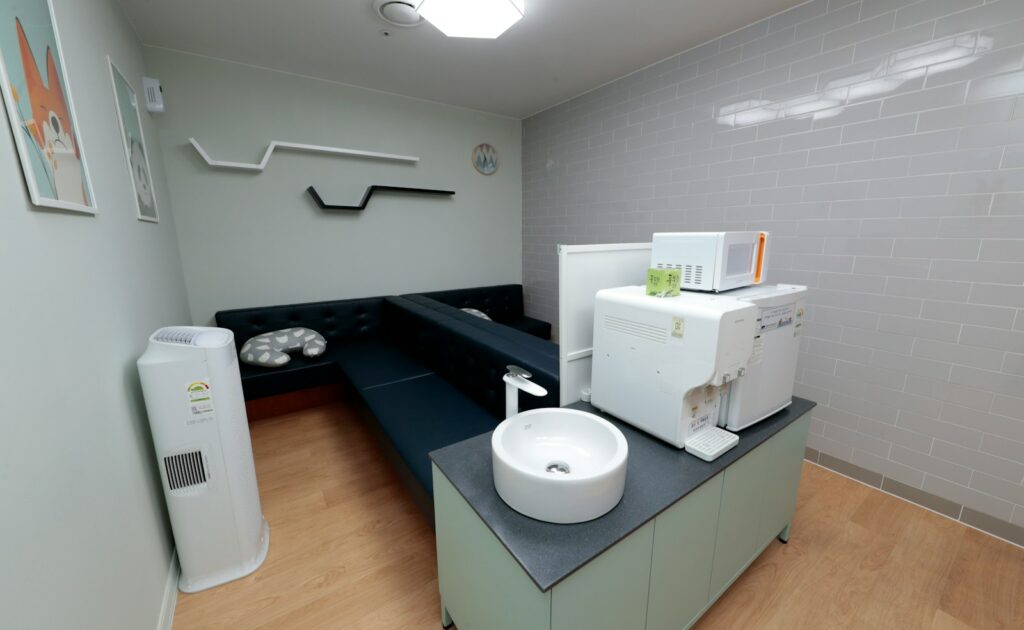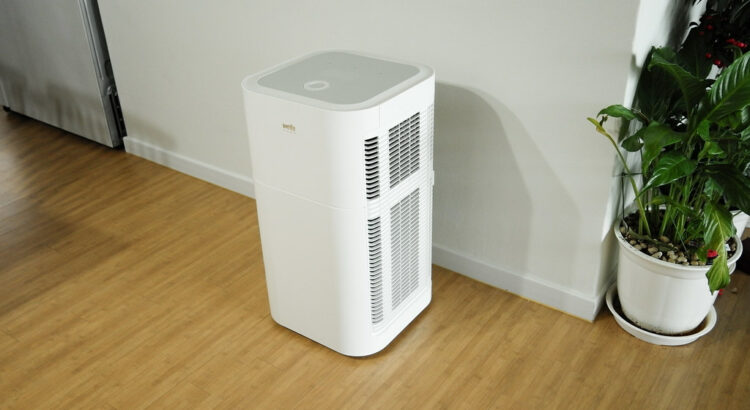
Tired of feeling like you’re breathing in dusty, polluted air in your own home? You’re not alone. Many people are turning to air purifiers as a potential solution. But do these sleek machines actually make a difference, or are they just another gimmicky product? Let’s dive into the world of air purifiers and find out if they really help with cleaning the air in your home.
Table of Contents
- Do air purifiers really work?
- How do air purifiers clean the air?
- Types of air purifiers and their effectiveness
- Factors to consider before buying an air purifier
- Common myths about air purifiers debunked
- The real benefits of using an air purifier
- Best practices for maximizing the effectiveness of air purifiers
- Are there any drawbacks to using an air purifier?
- Expert recommendations for choosing the right air purifier
- Tips for maintaining and cleaning your air purifier
- Questions & Answers
- To Wrap It Up
Do air purifiers really work?
Air purifiers are a popular choice for those looking to improve indoor air quality, but do they really work? The answer is yes, they can be effective in reducing allergens and other airborne particles. Air purifiers work by trapping and filtering out pollutants and irritants, such as dust, pet dander, pollen, and smoke. The best air purifiers use HEPA filters, which are designed to capture tiny particles and can remove up to 99.97% of airborne pollutants as small as 0.3 microns.
Using an air purifier can help to create a cleaner and more hypoallergenic environment in your home or office. By reducing the amount of allergens in the air, air purifiers can provide relief for those with allergies and respiratory issues. Not only can they help with reducing allergens, but they can also assist in neutralizing unpleasant odors and improving overall air quality. Investing in an air purifier is a great step towards creating a healthier living environment, especially for those who suffer from allergies or asthma.
The benefits of air purifiers are numerous, and incorporating one into your home can significantly improve the quality of the air you breathe. For those who suffer from allergies, asthma, or other respiratory issues, air purifiers can provide much-needed relief from airborne irritants. With proper maintenance and regular filter replacements, air purifiers can effectively remove allergens and other pollutants, leading to a cleaner and healthier living space. Consider investing in an air purifier if you are looking to create an allergy-friendly environment and improve your overall well-being.
How do air purifiers clean the air?
Air purifiers are devices designed to help clean the air by removing pollutants and impurities such as dust, pollen, pet dander, and smoke. They work by pulling air in, passing it through a filter to remove particles, and then releasing the clean air back into the room. But how exactly do they do this, and do they really help with cleaning the air?
Most air purifiers use a combination of the following methods to clean the air:
- HEPA filters: High-Efficiency Particulate Air (HEPA) filters are designed to trap 99.97% of particles that are 0.3 microns or larger, making them extremely effective at capturing dust, pollen, and other allergens.
- Activated carbon filters: These filters are great for trapping odors, gases, and volatile organic compounds (VOCs), making them ideal for use in homes with smokers or pets.
- UV-C light: Some air purifiers use ultraviolet light to kill germs, viruses, and bacteria, preventing them from being released back into the air.
- Ionizers: Ionizers work by charging particles in the air, causing them to stick to surfaces in the room rather than being inhaled.
Types of air purifiers and their effectiveness
When it comes to air purifiers, there are several different types available on the market, each with its own set of features and effectiveness. It’s important to understand the different types of air purifiers and their capabilities in order to make an informed decision about which one is best for your needs. Some of the most common types of air purifiers include:
- High-Efficiency Particulate Air (HEPA) filters, which are designed to capture 99.97% of particles that are 0.3 microns or larger in size.
- Activated carbon filters, which are effective at removing odors, gases, and volatile organic compounds (VOCs) from the air.
- UV-C purifiers, which use ultraviolet light to kill bacteria, viruses, and other microorganisms in the air.
- Ozone generators, which release ozone into the air to neutralize odors and kill bacteria and viruses.
Each type of air purifier has its own set of strengths and limitations when it comes to effectiveness in cleaning the air. For example, HEPA filters are excellent at capturing particles, but they are not effective at removing odors, gases, or VOCs. On the other hand, activated carbon filters are great for removing odors and gases, but they are not as effective at capturing particles. Understanding the strengths and limitations of each type of air purifier can help you choose the best one for your specific needs.
In addition to understanding the different types of air purifiers, it’s also important to consider how effective they are at reducing allergens in the air. For people who suffer from allergies, finding an air purifier that can effectively reduce allergens in the air is crucial. Some of the most effective air purifiers for reducing allergens include those with HEPA filters, which are excellent at capturing allergens such as pollen, pet dander, and dust mites. It’s also important to look for air purifiers that are labeled as hypoallergenic cleaners or allergy-friendly products, as these are designed specifically to help reduce allergens in the air. By choosing an air purifier that is effective at reducing allergens, you can create a cleaner and healthier indoor environment for you and your family.
Factors to consider before buying an air purifier
Before investing in an air purifier, there are several factors to consider to ensure you choose the right one for your specific needs. Here are some important factors to keep in mind:
Room size: Consider the square footage of the room where you plan to use the air purifier. Different models are designed to clean different size spaces, so it’s crucial to select one that is appropriate for the room you want to purify.
Type of filter: As we mentioned before, air purifiers come with various types of filters, such as HEPA, activated carbon, UV, and ionizers. Each type is designed to target different contaminants, so it’s essential to choose the right one for your specific air quality concerns.
Noise level: Some air purifiers can be quite loud, especially on higher settings. If you plan to use the purifier in a bedroom or office, you may want to consider a quieter model to avoid disturbances.
Price: Air purifiers come in a wide range of prices, so it’s important to set a budget and look for a model that offers the best value for your money.
Maintenance: Consider the ongoing cost of filter replacements and energy usage when choosing an air purifier. Some models may have more expensive or hard-to-find replacement filters, so factor this into your decision-making process.
Features: Look for additional features that may be important to you, such as air quality sensors, programmable settings, and remote control capabilities.
By considering these factors before purchasing an air purifier, you can ensure that you select the right model to effectively improve the air quality in your home or office.
| Room size | Type of filter | Noise level | Price | Maintenance | Features |
|---|---|---|---|---|---|
| Small | HEPA | Low | $ | Affordable | Air quality sensors |
| Medium | Activated carbon | Moderate | $$ | Low | Programmable settings |
| Large | UV | High | $$$ | High | Remote control |
One of the most common misconceptions about air purifiers is that they are only helpful for people with allergies. However, the truth is that air purifiers can benefit everyone by improving indoor air quality. Another myth is that air purifiers alone can completely eliminate all allergens and pollutants in your home. While air purifiers can reduce the presence of these irritants, they cannot completely eliminate them. It’s also often believed that air purifiers are noisy and disrupt daily activities, but the reality is that many modern air purifiers are designed to work quietly in the background.
It’s important to understand that air purifiers are not a magical solution that can solve all your indoor air quality problems. Rather, they are a useful tool that, when properly used in conjunction with other cleaning methods, can greatly improve the air in your home. Keep in mind that to get the most out of your air purifier, regular maintenance and filter replacement are necessary to ensure optimal performance. Additionally, some air purifiers are designed for specific purposes, such as reducing allergens or odors, so it’s essential to choose the right type for your needs.
The real benefits of using an air purifier

There are a number of real benefits to using an air purifier in your home, especially if you suffer from allergies or asthma. Here are some of the top advantages of incorporating an air purifier into your living space:
- Reduction of Allergens: An air purifier can effectively reduce common allergens such as dust, pollen, and pet dander, making it easier for allergy sufferers to breathe.
- Improved Indoor Air Quality: By removing harmful particles from the air, air purifiers can significantly improve the overall quality of the air in your home, leading to better respiratory health and fewer instances of allergy-related symptoms.
- Odor Elimination: Air purifiers are also effective at eliminating unpleasant odors, such as those from cooking, pets, or smoke, leaving your home smelling fresh and clean.
- Reduced Asthma Triggers: For individuals with asthma, air purifiers can help to minimize the presence of asthma triggers, leading to fewer asthma attacks and improved respiratory function.
By investing in an air purifier for your home, you can experience these significant benefits and enjoy a cleaner, healthier living environment.
Best practices for maximizing the effectiveness of air purifiers

Air purifiers can be a great addition to any home when it comes to improving air quality and reducing allergens. However, in order to maximize their effectiveness, there are a few best practices that you should keep in mind. By following these tips, you can ensure that your air purifier is doing the best job possible at keeping the air in your home clean and fresh.
- Proper Placement: It’s important to place your air purifier in the right location to maximize its effectiveness. Make sure to put it in a central area of the room where it can circulate the air most efficiently. Also, be sure to keep it away from walls and furniture to allow for proper air flow.
- Regular Maintenance: Like any other appliance, air purifiers require regular maintenance to function effectively. Be sure to clean or replace the filters according to the manufacturer’s instructions. This will ensure that your air purifier continues to remove allergens from the air at its best capacity.
- Keep Your Home Clean: While air purifiers can help to reduce allergens in the air, it’s important to also keep your home clean and free of dust and pet dander. Regular vacuuming, dusting, and the use of hypoallergenic cleaners can all help to further improve air quality in your home.
- Monitor Air Quality: Consider using an air quality monitor to keep tabs on the air in your home and see how it improves with the use of an air purifier. This can help you to make adjustments to the settings or placement of your purifier for optimal results.
- Invest in High-Quality Purifiers: Not all air purifiers are created equal, so it’s important to do your research and invest in a high-quality model. Look for HEPA filters and allergy-friendly products that are known for their effectiveness at reducing allergens in the air.
- Consider the Size of Your Space: Be mindful of the square footage that your air purifier can effectively cover. If you have a larger space, you may need multiple purifiers or a larger unit to adequately clean the air.
In conclusion, air purifiers can be an effective tool for improving the air quality in your home and reducing allergens, as long as they are used properly and in conjunction with other best practices such as regular cleaning and maintenance. By following these recommendations, you can ensure that your air purifier is working at its best capacity to keep the air in your home clean and fresh.
Are there any drawbacks to using an air purifier?

While air purifiers are incredibly effective at reducing allergens and improving indoor air quality, there are a few potential drawbacks to consider before making a purchase. It’s important to weigh the pros and cons to determine if an air purifier is the right choice for your home.
Some potential drawbacks of using an air purifier include:
- Noise: Some air purifiers can be quite loud, especially on higher settings. This may be distracting or disruptive in quiet environments.
- Initial Cost: Quality air purifiers can be pricey, and the cost may be a deterrent for some consumers.
- Filters: Many air purifiers require the regular replacement of filters, which can be an ongoing expense.
- Ozone Production: Certain types of air purifiers can produce ozone as a byproduct, which may be harmful to some individuals.
Expert recommendations for choosing the right air purifier

Given the wide variety of air purifiers available in the market today, it can be overwhelming to choose the right one for your needs. To help you make an informed decision, here are some :
- Consider the Size of the Room:
- Check the square footage rating of the air purifier to ensure it can effectively clean the air in your space. Determine the CADR (Clean Air Delivery Rate) for the specific pollutants you want to remove.
- Filter Type:
- Look for HEPA filters for removing allergens, dust, and pet dander from the air. Consider activated carbon filters for removing odors and VOCs.
- Noise Level:
- Read reviews and look for decibel ratings to find a quieter air purifier for use in living spaces or bedrooms.
- Energy Usage:
- Check the energy consumption of the air purifier to ensure it’s not too high, especially if it will be running constantly.
When it comes to choosing the right air purifier, it’s essential to consider your specific needs and priorities. Whether you’re looking to reduce allergens, eliminate odors, or simply improve the overall air quality in your home, there are a few key factors to keep in mind. By taking the time to research and compare different models, you can find the perfect air purifier to suit your needs. Remember, the right air purifier can make a significant difference in the air quality of your home. So, take the time to make an informed decision and choose the best air purifier for you and your family!
Tips for maintaining and cleaning your air purifier
Maintaining and cleaning your air purifier is essential to ensure it functions effectively and efficiently. Here are some tips to help you keep your air purifier in top condition:
- Regular Filter Replacement: Make sure to check your air purifier’s manual to determine how often the filter needs to be replaced. Typically, it is recommended to replace the filter every 6 to 12 months, depending on usage and the type of filter.
- Keep the Exterior Clean: Wipe down the exterior of the air purifier regularly to prevent dust and dirt buildup. Use a soft, damp cloth to gently clean the surface and ensure proper airflow.
- Vacuum the Surrounding Area: Dust and debris can accumulate around the air purifier, so it’s important to vacuum the surrounding area regularly to prevent particles from being pulled into the unit.
- Clean the Air Inlet and Outlet: Use a vacuum brush attachment to clean the air inlet and outlet vents. This will help prevent blockages and optimize air circulation.
- Inspect the UV-C Light (if applicable): If your air purifier is equipped with a UV-C light, check the manufacturer’s guidelines for maintenance. Typically, the light should be replaced every 10-12 months to ensure optimal performance.
- Schedule Professional Maintenance: Consider scheduling professional maintenance for your air purifier at least once a year. A trained technician can thoroughly clean and inspect the unit to identify any potential issues.
Incorporating these maintenance tips into your routine will not only prolong the life of your air purifier but also ensure that it continues to effectively reduce allergens and improve the air quality in your home. Regular maintenance is key to maximizing the performance of your air purifier and creating a healthier indoor environment for you and your family.
| Recommendation | Reason |
|---|---|
| Regular Filter Replacement | Keeps air purifier functioning effectively |
| Keep the Exterior Clean | Prevents dust and dirt buildup |
| Vacuum the Surrounding Area | Prevents particles from being pulled into the unit |
| Clean the Air Inlet and Outlet | Optimizes air circulation |
| Inspect the UV-C Light | Ensures optimal performance |
| Schedule Professional Maintenance | Prolongs the life of the air purifier |
Questions & Answers for Air Purifiers
Do air purifiers actually work to clean the air in your home?
A: Yes, air purifiers are designed to remove pollutants and contaminants from the air, helping to create a cleaner and healthier indoor environment.
What kind of pollutants do air purifiers target?
A: Air purifiers can effectively remove a wide range of pollutants, including dust, pollen, pet dander, mold spores, and even some bacteria and viruses.
Can air purifiers help with allergies and asthma?
A: Yes, many people find relief from allergies and asthma symptoms when using air purifiers, as they can significantly reduce the levels of allergens and irritants in the air.
Are there different types of air purifiers?
A: Yes, there are several different types of air purifiers, including HEPA filters, activated carbon filters, UV air purifiers, and ionizers, each with their own specific method of removing pollutants from the air.
How do I know which air purifier is right for me?
A: It’s important to consider the size of the area you want to purify, as well as the specific pollutants you want to target. Doing your research and consulting with a professional can help you determine the best air purifier for your needs.
Are there any drawbacks to using an air purifier?
A: Some air purifiers can produce ozone as a byproduct, which can be irritating to some individuals. Additionally, air purifiers require regular maintenance and filter replacements to remain effective.
Can air purifiers eliminate all pollutants from the air?
A: While air purifiers can significantly reduce the levels of many pollutants, it’s important to remember that they may not eliminate all pollutants entirely. Regular cleaning and proper ventilation are also important for maintaining indoor air quality.
To Wrap It Up
So, do air purifiers actually help with cleaning? There’s no denying that they can remove certain pollutants and improve air quality, but whether or not they truly contribute to overall cleanliness is still up for debate. It seems like air purifiers are here to stay, and while they may not completely replace traditional cleaning methods, they could certainly be a helpful tool in maintaining a healthier living environment. In the end, the decision is up to you, but hopefully, with a little more information, you can make the right choice for your home or office. Stay informed and keep breathing clean air!
